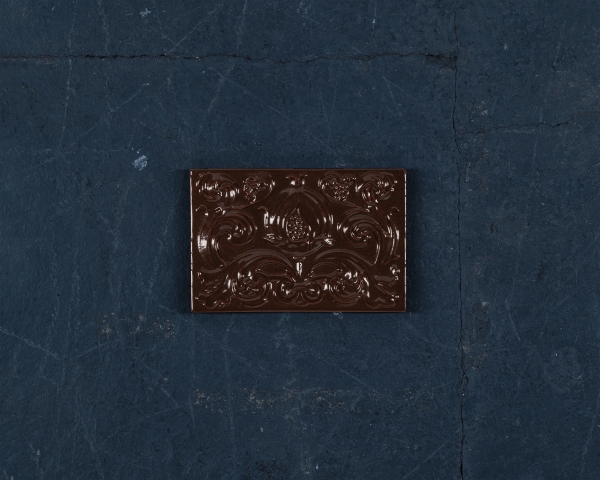Making tracks – tiles from the London Underground
Waste produced from the construction and operation of the London Underground could be channelled back to the ‘Tube’ in the form of tiles.

The concept was demonstrated in Jeffrey Miller’s final project – From The Underground – for his Masters in Materials Futures at Central St Martins, London, UK.
The materials used include 100% London clay excavated during tunnel boring, with no extra additives or mixtures of other clays, and iron-oxide-rich dust from train wheels grinding against steel tracks for the glaze.
The tiles are cast from moulds provided by H&E Smith, a manufacturer that refurbishes tiles for the London Underground that were originally designed by Architect Leslie Green.
Miller says, 'The colour of the glaze is derived from the London Underground dust, mainly as an inorganic pigment. The glaze is made from anywhere between 20-50% dust from the London Underground, depending on colour or finish preference, and mixed with a commercial clear glaze with the hope of making a 100% recycled glaze in the future.' As the dust also carries other particulates, such as hair or small stones, these do need filtering out.
He found his initial decision to mill the dust using a ball mill was unnecessary because the train wheels grinding against the tracks produce small enough particle sizes for glazes. Having the trains do the milling reduces the manufacturing process’s complexity and energy costs.
Meanwhile, the raw clay also has significant impurities. Miller adds, 'The clay is dried out entirely, crushed into smaller particles and added to water…Then, the liquid clay is filtered using a series of fine sieves to remove any impurities. It is then dried out on plaster boards until it is a workable consistency…One of the reasons you cannot, in most cases, simply take clay from the ground and work with it, is because clay particles are ionically charged, which can cause the clay to warp during the drying process.' Proper mixing reduces the process to which raw clays are vulnerable.
He worked with Hana Ovčačíková, Vlastimil Matějka and Jozef Vlček from the VSB – Technical University of Ostrava, Czechia, to create the first test pieces in their laboratory.
Collecting the material for the initial prototypes proved a challenge. 'Tim Newman, a geologist who worked on the Thames Tideway project and the Elizabeth Line, was able to donate borehole samples of London Clay from the Tideway project,' Miller shares.
The iron-oxide-rich dust was a more low-tech collection effort, he says. 'I collected the iron-oxide-rich dust in stations with a vacuum cleaner. It was somewhat of an embarrassing process, but at the time, I had no other way of getting the material for testing…I vacuumed along the platforms, mostly from the Victoria, Piccadilly and Central lines, as I found these stations had the highest concentrations of dust.'
A research paper that looked at the health hazards of the Tube inspired his idea – it found that 60% of the dust was made up of iron oxide.
Miller believes the project 'can be scaled up significantly…In addition, the materials used here can be easily introduced into existing ceramic manufacturing processes…Iron oxide is probably the most used inorganic pigment in the ceramic tile industry…making its introduction into ceramic manufacturing more seamless'.
In the future, he hopes to use the clay being excavated from the new HS2 stations in London.







